Sage 50 to ERP: comparison and guide
Back in the 1990s, I used Peachtree in my consulting business. Peachtree was a double-entry accounting system that had all the power I needed for small and simple businesses. Many years later it is now Sage 50. The system has evolved gaining capabilities that were not possible then and it still is a very capable accounting system well-suited to businesses of almost any size where the requirements are simple.
Let’s look at a few advertised features of Sage 50 and compare them to ERP features. Is Sage 50 right for your business? It might well be all you need.
Advanced inventory management
Inventory management is a strong feature in Sage 50. Setting up a new item or SKU is quick and easy and, at the same time, you add that product to categories to enhance and automatically filter future reporting. Sales transactions move an item from inventory to the cost of sales. If you build or assemble products, you can transfer items from inventory to job costing. Sage 50 allows inventory costing using LIFO, FIFO, average cost, and specific cost.
Replenishing inventory is done through purchase orders issued to a specific supplier. Replenishment signals come through establishing minimum stock levels and reorder points to help ensure your business avoids stockouts. If desired, you can set up automated reorder purchase orders and the system generates a PO sending it directly to your chosen supplier.
There are many powerful features built into Sage 50’s advanced inventory management tools. For many businesses, this is all they need. But it is not ERP. Material requirements planning is built into every ERP system where the system starts with on-hand inventory, adds incoming purchase orders, and subtracts existing sales order demands and future forecast demands for every item in inventory.
If the result is negative, the business needs to order more supply and the system uses lead times to suggest specific purchase orders. If the result is positive, this means your business has surplus inventory and the system will suggest canceling or postponing purchase orders or alert your management to dispose of that surplus. MRP is a much more sophisticated planning process that delivers significant improvements above a reorder point process.
Job costing
Job costing in Sage 50 allows a business to enter purchases linked to jobs or projects and view the total cost of that job relative to the revenue from the job. Sage 50 also provides tools to manage payroll and, if you choose to use them, you can charge labor time and expenses to jobs as well. Jobs, as defined in the standard level of Sage 50 are single-layer only. If your business requires tracking of job phases or cost codes, then an upgrade to the premium or quantum level will be necessary.
If your business requires more, then ERP might be what you need. ERP provides multi phases and multiple cost codes. ERP also will let you complete jobs to a succeeding job so all the costs and other data of the feeder job becomes part of the new job. At the end of production, ERP can complete a job by adding the finished product to inventory. ERP also can complete a job with the cost moving directly to the cost of sales.
Sage HR
Sage 50 comes from a large software provider and other modules they sell can link to your Sage 50 as needed for your business’ particular requirements. Sage HR is one example. A business can keep all the needed records on employees on-premises and off-site.
You get a common communication tool to inform all employees about rules and regulations and the Friday beer event too. At the same time communication flows the other way for time off requests and questions for the boss. Features like employee performance tracking and expense management and reimbursement are built into Sage HR.
Modularity is a great option so a business only buys what they need and I like the option with Sage 50. Most ERP systems whether from Sage or another provider are built in a similar fashion.
Shipping and logistics
ShipGear is another module that directly connects to Sage 50cloud to pull information from your accounting software and inventory so you can print labels, find the best shipping cost, and track your shipments all the way to your customer so none go astray. ShipGear integrates with UPS, FedX, and other carriers and allows a single transaction to record the shipping transaction in Sage 50 and prepare the shipping paperwork too.
Summary
Sage 50 is positioned as easy-to-use accounting software for small businesses. Sage 50 is scalable and big businesses can use it as well. The distinguishing factor is more the complexity of the business rather than the size. It is flexible enough to satisfy a CPA and is easy to learn for non-accountants too.
Sage 50 has good security features that allow managers to have full access while remote users are allowed only the access they need. Sage 50 works with Microsoft 365 very well. You can view Sage contacts through Outlook and many Sage 50 reports use Excel optionally. Sage 50 is an excellent, comprehensive accounting program, capable of doing more than many small businesses need.
We all know that one size does not fit all with regard to enterprise software. Sage 50 is a very capable accounting system that fits many businesses. Sage 50 goes beyond accounting too so even more businesses can benefit. But Sage 50 is not an ERP and your business needs might require more.
If you need to manage sales orders with complex requirements and multiple deliveries, ERP is more likely to help. Integration across disciplines, such as engineering, quality assurance, and production might necessitate ERP. Inventory optimization is another ERP qualifier, beyond just an accurate count, ERP can help maintain the right levels of each item.
Production scheduling and routing are part of ERP too but are not available in Sage 50. Shop load planning and shop capacity management are also beyond Sage 50.
The bottom line: Sage 50 is excellent and will fit many businesses. Is yours one?
Free white paper

ERP Software Comparison
Compare 103 ERP Software Products
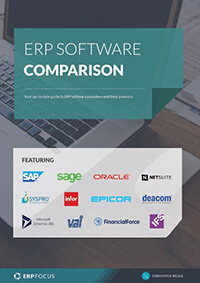
Featured white papers
-
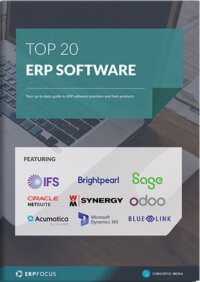
-
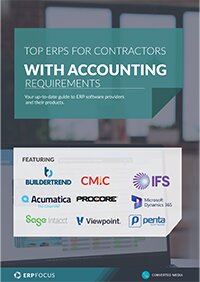
Top 10 ERPs for Contractors
Get your free side-by-side ERP comparison guide for contractors who need more than basic accounting tools.
Download -
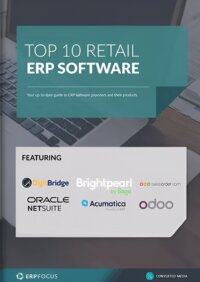
Related articles
-
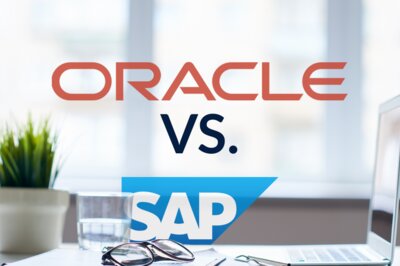
Real life experiences: Oracle vs SAP
A project manager's take on Oracle and SAP' strengths and weaknesses
-

Secret KPI: Why Your ERP Implementation Team Matters More Than Software
Learn how Godlan ensures successful ERP implementation for manufacturers with proven strategies &...
-

Real life ERP experiences: Sage 300 vs Microsoft Dynamics GP
Which one suits your needs better?

